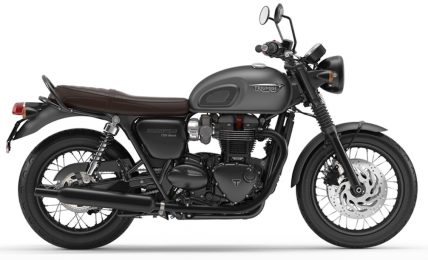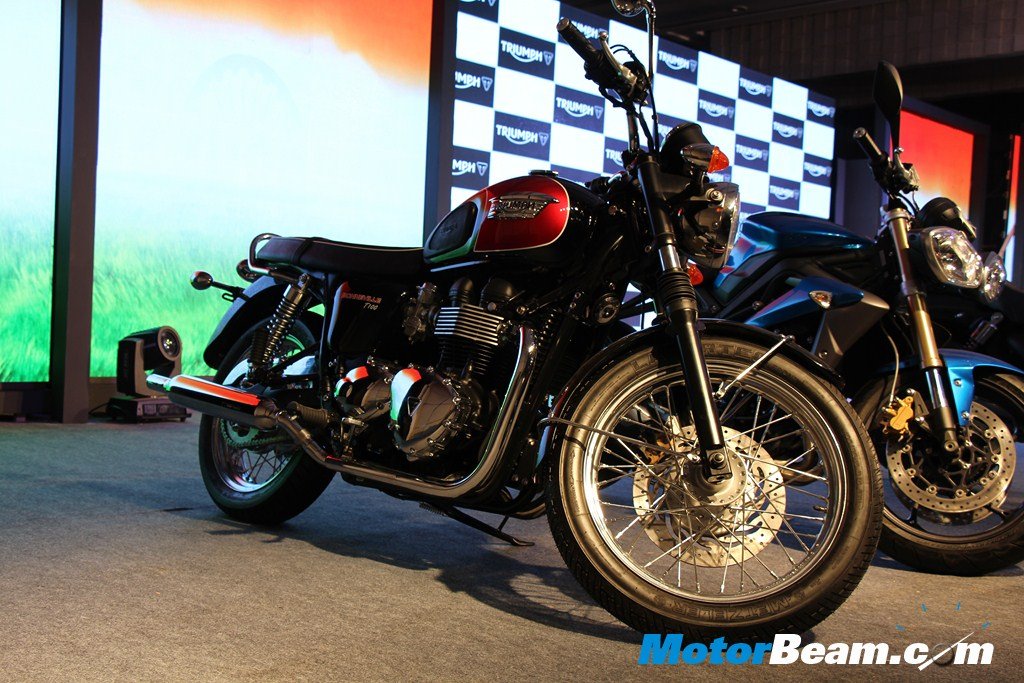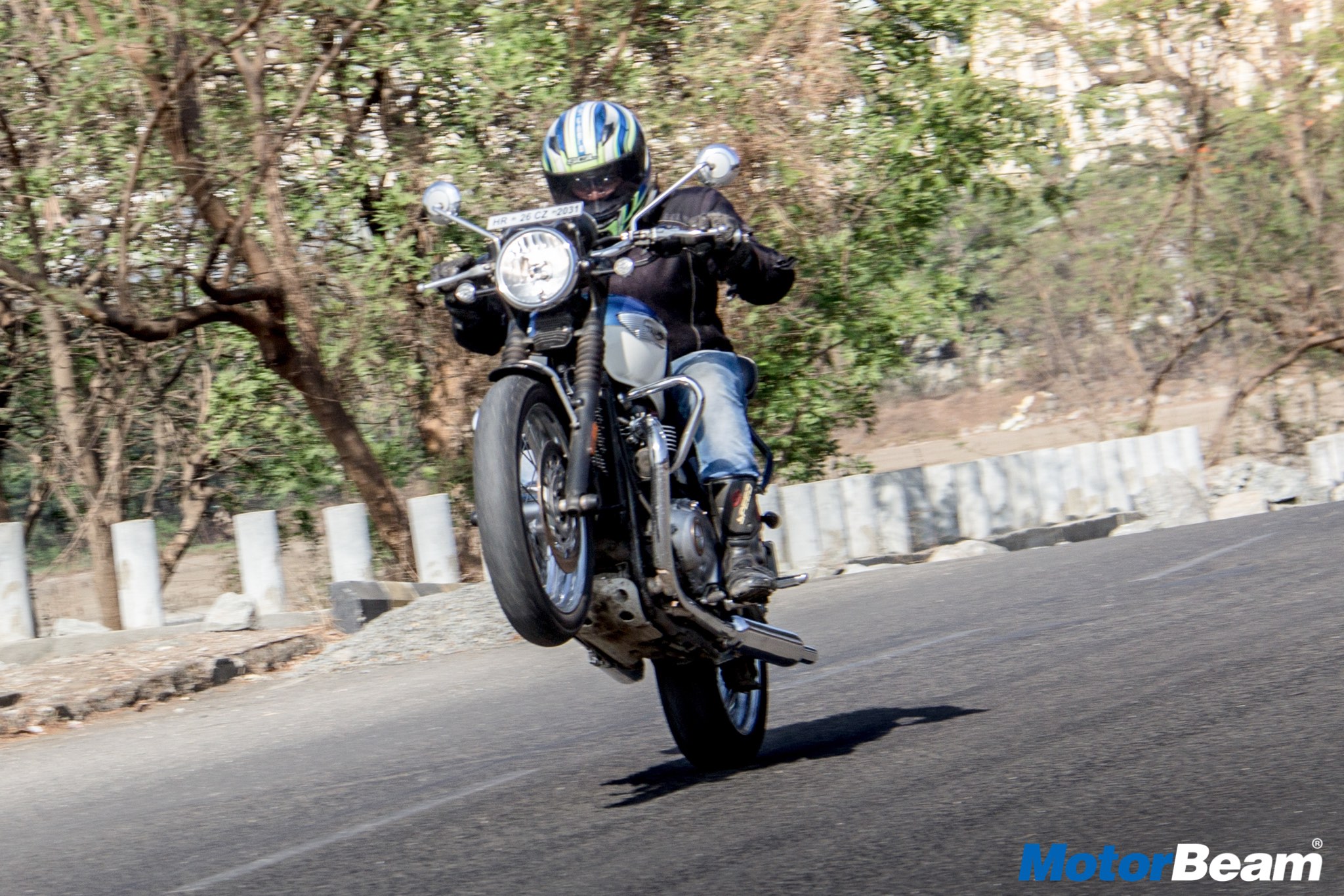Lifitng a wheel isn’t easy but the Bobber does manage some airtime
Performance – At the heart, the Bonneville Bobber borrows the 1200cc parallel twin motor from the T120. However, it runs on a slightly different state of tune making 76 BHP of power at 6100 RPM and a massive 106 Nm of torque at 4000 RPM. However, this was the first time we rode a Bonneville with a 1200cc parallel twin motor and we were quite impressed with the immense torque pull, which is so immediate that the traction control wasn’t able to handle the wheelspins. Once the switchable traction is turned off, a good control on the throttle is necessary as there is no delay at all in those intended powerslides. This parallel twin motor revs up to 6500 RPM in no time and the redline comes in at a little above that.
The motor in complete flesh, did you notice the key placement location?
Triumph’s parallel twin rumble is very soothing, neither too loud nor too quiet
The 6-speed gearbox has slick shifts but the clutch feels so heavy that getting it into neutral is also a task. The Bobber has tall gears which meant lesser gear shifts are required. Hitting the ton is just as easy and quick as it can be. First gear tops out at 70 km/hr while the 2nd gear takes the bike to 110 km/hr. However, the engine runs smoothly even on the 6th gear at 60 km/hr. There were some engine vibrations creeping in here and there but harshness wasn’t felt at all. The test bike had Vance & Hines end-cans too, making it super fun to rev the Bobber.
The Bonneville Bobber doesn’t look as alluring as it actually is
Riding Dynamics – Riding the Bobber isn’t much of a task, however, getting used to the riding posture might take a while. The low saddle height makes it easy for anyone to ride. But that’s the game changer! It has only one seat and although the seat height can be adjusted, the maximum height it goes to is just 690 mm. The front 41 mm KYB forks are the same as we’ve seen on all Bonneville models and the rear suspension is a tiny KYB monoshock with linkage offering only 77 mm of travel. As soon as you hit a bump, the rear just bounces back and unsettles the rider as well as the motorcycle. Overall, the motorcycle is comfortable but not as much for the Indian roads. The Bobber has 228 kgs of raw mass and yet it doesn’t feel heavy once you start riding.
Yup, I hit a bump and was actually thrown in the air (not literally)
A regular motorcycle to live with and yet the Bobber is one hell of a looker
The rake angle is also increased making the wheelbase a little longer at 1510 mm. Hence, the Bobber requires extra effort and a little more lean angle to tackle corners. The Bobber has a 19-inch steel rim at the front with 100-section rubber while the 16-inch rim at the rear gets 150-section rubber. The grip from these tyres is just about adequate. In spite of that, the 310 mm single disc at the front and the 255 mm single disc at the rear provide stupendous braking power and feedback. While the tubular steel cradle frame does the job of keeping the dynamics intact, the Bobber becomes a real fun-to-ride motorcycle once you get used to it.




